The old Transport Museum closed in 2015. The museum had outgrown its old building 100 years ago. A new location was sought (unsuccessfully) in the 1910s, to replace the old building, which was always intended to be a temporary solution. Following a lengthy preparatory process, the government designated the Diesel Hall of the Northern Vehicle Repair Shop as the site of the new Transport Museum in December 2017.
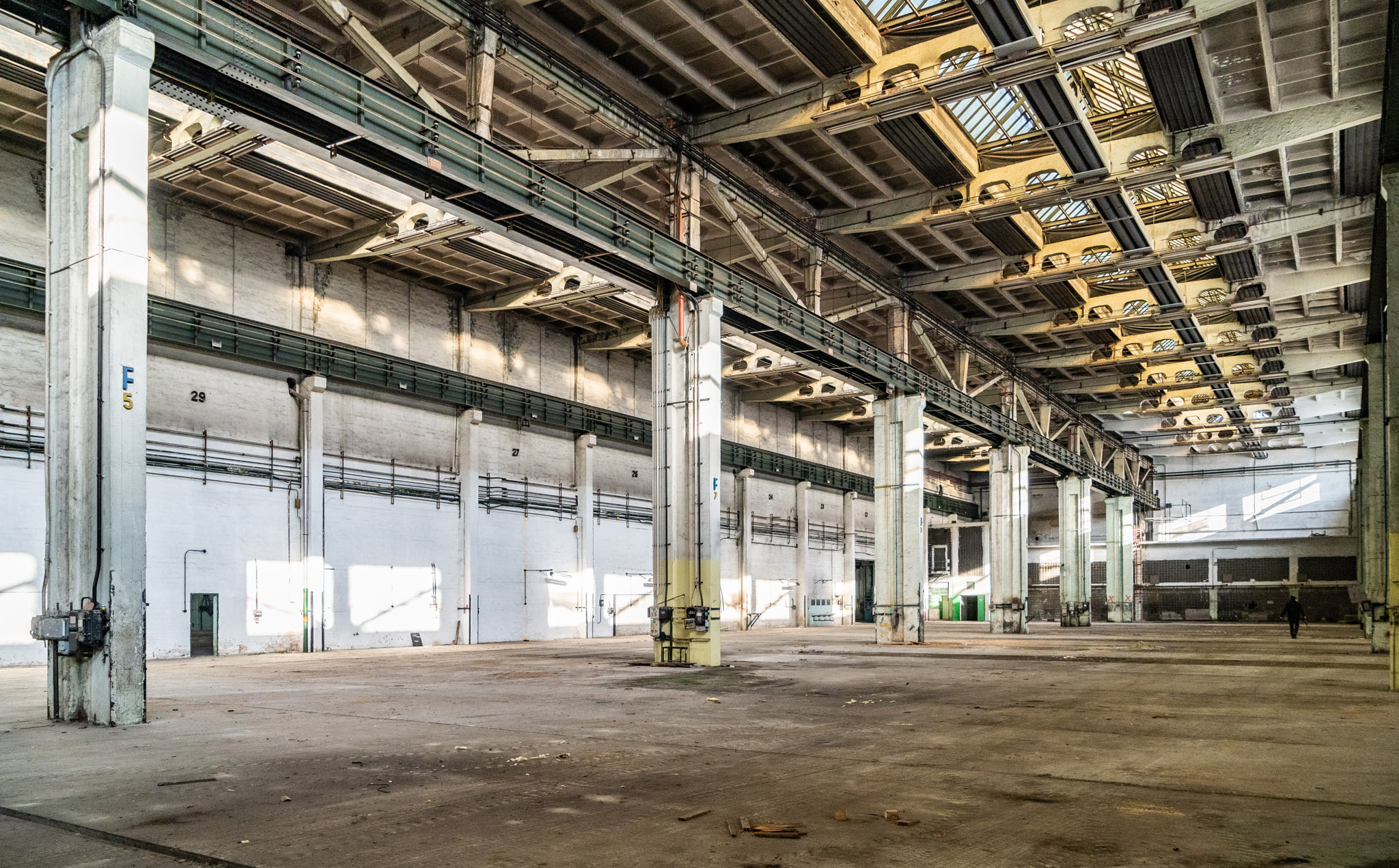
The Northern Vehicle Repair Shop as seen today – The building will house the Transport Museum after renovation (Photo: Balázs Both/Pestbuda.hu)
Previously, plans had been made to keep the museum in its former building in City Park by expanding its floorspace underground. However, the massive collection would simply not have fit in the expanded space.
The new building in Kőbánya, the Diesel Hall of the former Northern Vehicle Repair Shop, will serve as an authentic and spacious home for the museum after the planned large-scale reconstruction (which will preserve the location’s industrial past, while offering world-class technical solutions). The project will also be a meaningful development of the surrounding rustbelt, opening up new tourism opportunities.
The museum hopes to open on its new location this year and present its plans for the development this year, aligned to the possibilities presented by the pandemic. The plans of the reconstruction are being prepared by the internationally recognised Diller Scofidio + Renfro design studio in cooperation with their Hungarian partner, the Ybl Award-winning Tamás Noll of M-Teampannon. In May 2020 the government decided to provide the financial support necessary to plan and prepare the new building complex. The project will be one of Europe’s largest brownfield investments.
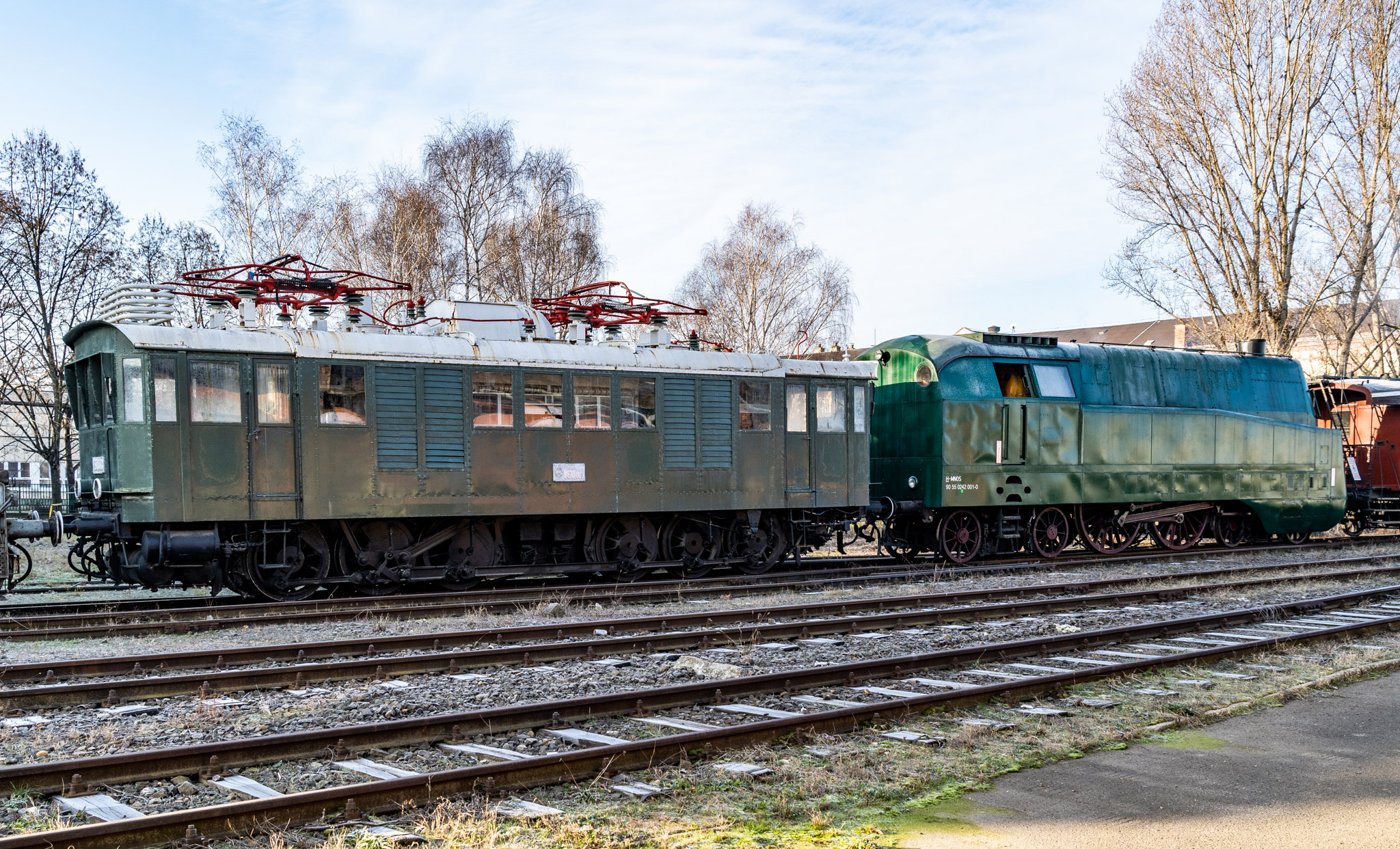
Legendary locomotives on-site: Kandó’s V60 electric locomotive and the streamlined 242 steam locomotive (Photo: Both Balázs/Pestbuda.hu)
Staff at the Transport Museum will be happy to organise a temporary exhibition in the museum’s building. Nevertheless, the institution aims to provide more than exhibitions through ongoing events for families based on museum pedagogy, and other seasonal events. Visitors will also arrive for conferences, presentations, and other events.
Thus, the exhibition will showcase the past, present and future of what was once the most extensive rail repair shop in Hungary, and highlight why the new museum is being built here, and what it will look like, once completed.
Naturally, the exhibition will when the regulations in-force due to the pandemic- allow. Preparation is already underway, art the artefacts are arriving on the site.
As a result, six original locomotives have arrived at the Northern Vehicle Repair Shop. The most popular Hungarian steam locomotive, a 424; the most common shunting locomotive used by MÁV, an M44; as well as a V60 electric locomotive designed by Kálmán Kandó, which once drew freight trains on the Budapest-Hegyeshalom line have been moved to the location.
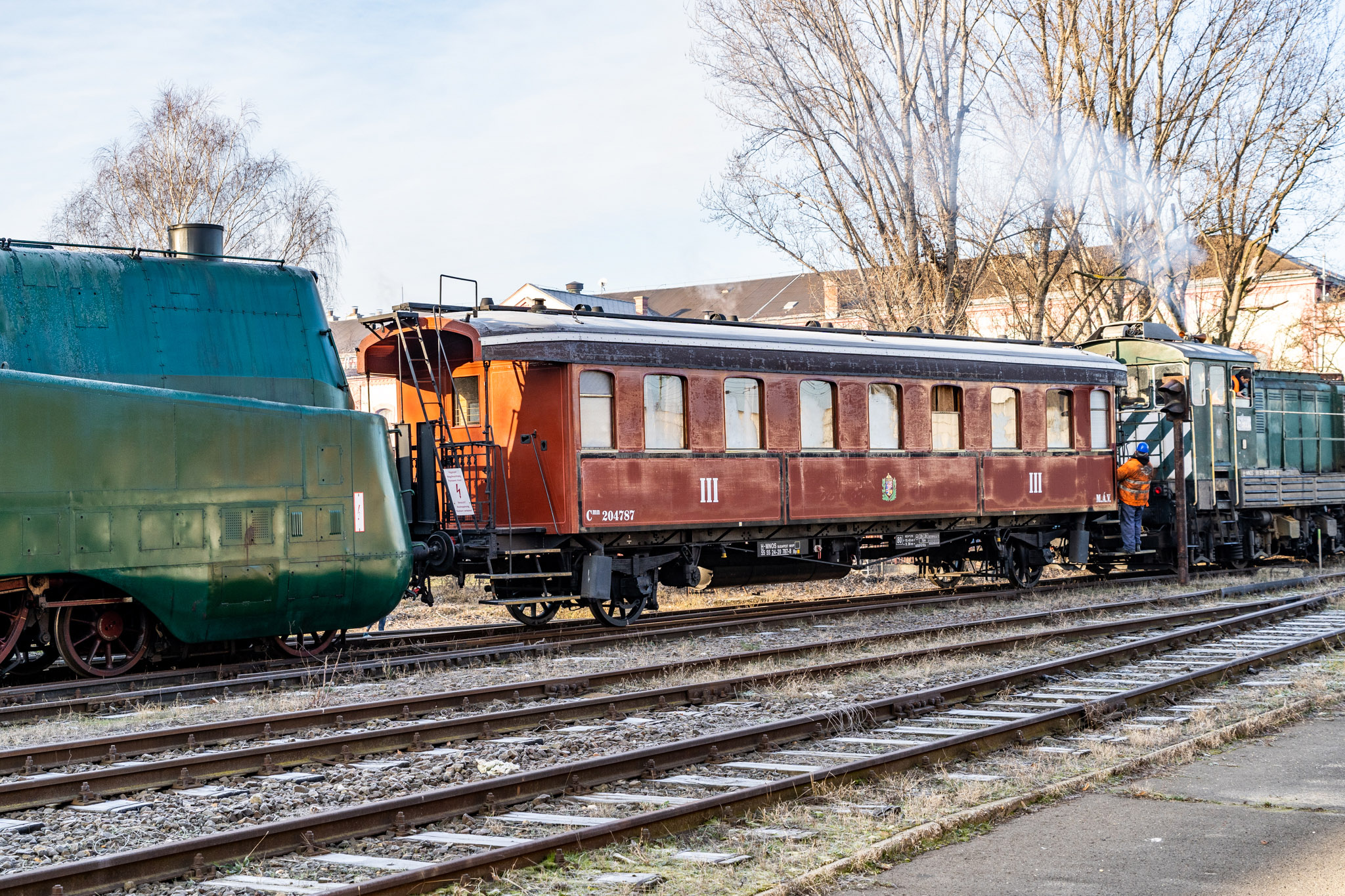
A surviving example of one of MÁV’s most used passenger cars will also be on display (Photo: Balázs Both/Pestbuda.hu)
The streamlined 242 steam locomotive, which was the fastest steam engine to ride the rails in Hungary, is expected to be the star of the exhibition.
But the temporary exhibition will go beyond locomotives. A passenger car of which 1500 were made – making the carriage the most numerous single vehicle type ever in the MÁV fleet – will also be displayed. The Árpád railbus, which covered the distance between Vienna in Budapest in only 2 hours and 59 minutes, will appear as well. Each of the selected vehicles is connected to the Northern Vehicle Repair Shop in some way.
At a press conference held when the vehicles arrived at the new location, Dávid Vitézy, CEO of the Museum, said:
“It is with great pleasure that we announce that the Transport Museum will present a temporary exhibition in the Diesel Hall before construction begins. The future home of the Transport Museum, the former Northern Vehicle Repair Shop, will house an exhibition to showcase the history of the repair hall and the plans for the renovation of the building and its environment — the locomotives that have arrived today, will be on display during the exhibition.” The CEO highlighted that plans for future buildings would aim to preserve the area’s industrial heritage while creating a contemporary space fitting for a modern museum in the rustbelt.
Five railway vehicles arrived on the morning of 11 January 11; the Árpád railbus will arrive on Tuesday. In addition to the above, the planned exhibition will await visitors with many smaller artefacts.
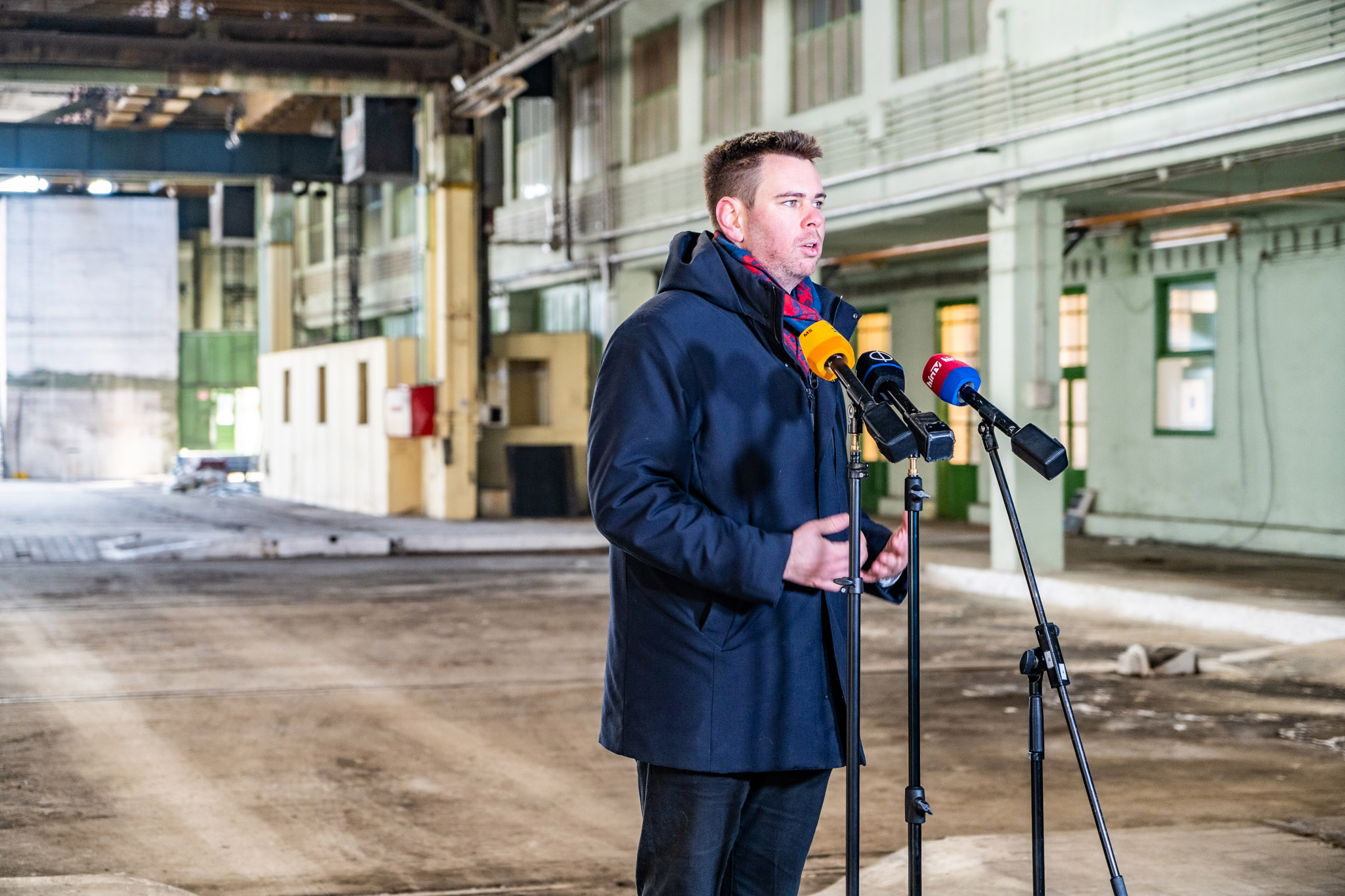
Dávid Vitézy, CEO, presents the plans (Photo: Balázs Both/Pestbuda.hu)
Hopefully, the exhibition will open as soon as possible. Unfortunately, the exact date depends on how the pandemic unfolds, but in the meantime, museum staff are continually working on the new temporary exhibition.
Cover photo: Legendary 424 locomotive arrives at the Northern Vehicle Repair Shop (Photo: Balázs Both/Pestbuda.hu)

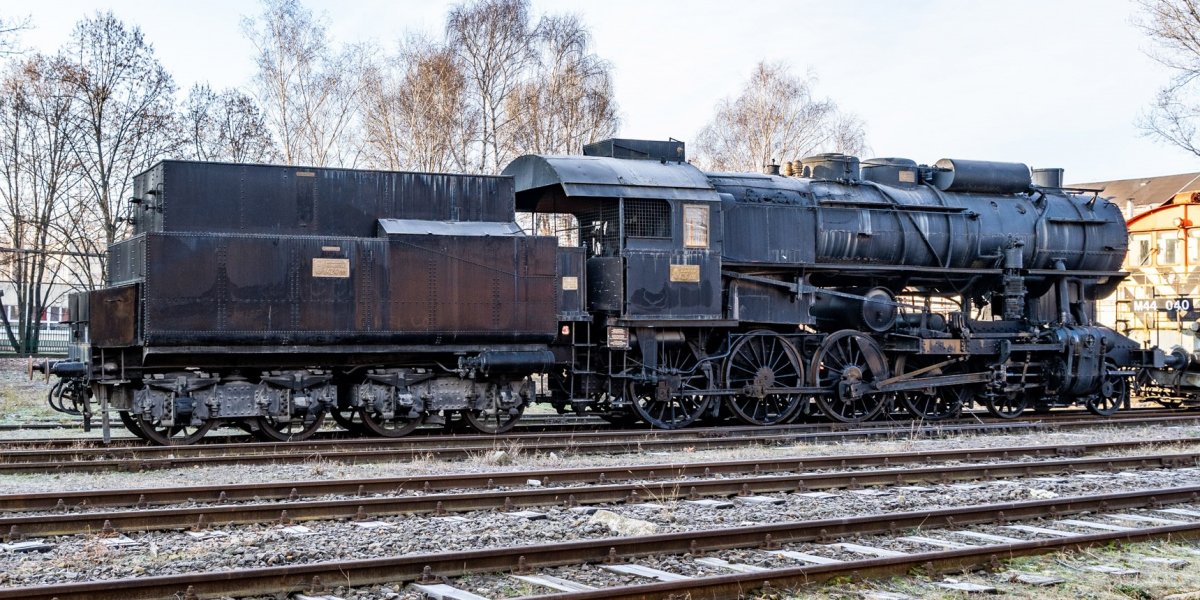




































Hozzászólások
Log in or register to comment!
Login Registration